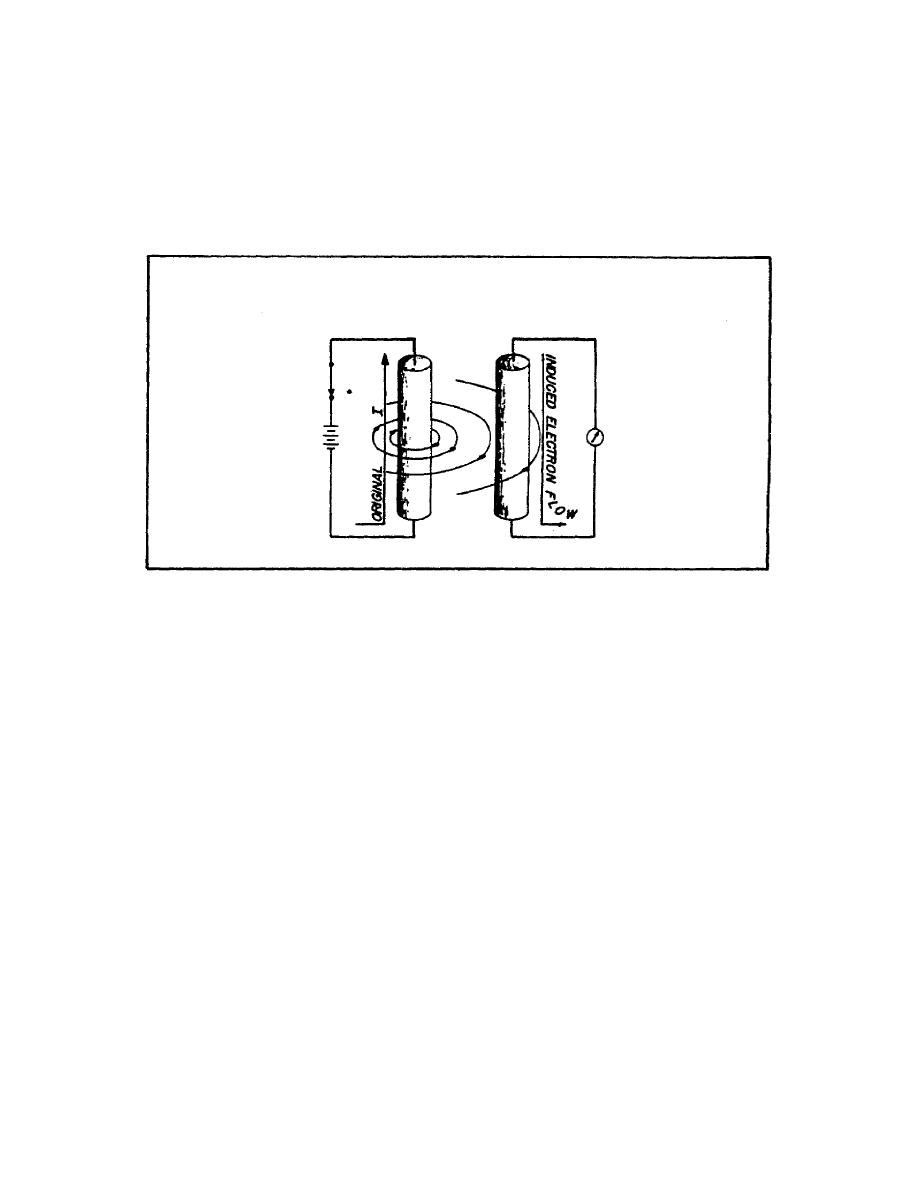
ELECTRONIC PRINCIPLES - OD1647 - LESSON 1/TASK 1
b. Electromotive Force (EMF). Electromotive force is a
difference of potential or voltage which exists between two
points in an electrical circuit. In generators and inductors,
the emf is developed by the action between the magnetic field
and the electrons in a conductor (shown in figure 9).
FIGURE 9. GENERATION OF AN EMF IN AN ELECTRICAL CONDUCTOR.
When a magnetic field moves through a stationary metallic
conductor, electrons are dislodged from their orbits. The
electrons move in a direction determined by the movement of the
magnetic lines of flux. This is shown in figure 10 on the
following page.
The electrons move from one area of the conductor into another
area. The area that the electrons moved from has fewer negative
charges (electrons) and becomes positively charged. The area
the electrons move into becomes negatively charged. This is
also shown in figure 10.
The difference between the charges in the conductor is equal to
a difference of potential (or voltage). This voltage caused by
the moving magnetic field is called the electromotive force
(emf).
In simple terms, the action of a moving magnetic field on a
conductor can be compared to the action of a broom. Consider
the moving magnetic field to be a moving broom. As the magnetic
broom moves



 Previous Page
Previous Page
